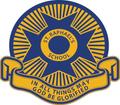Foundation News

Learning Back at School
The children are back into the swing of learning onsite at school. They have re-established friendships and are reminding themselves to not call their teacher 'Mum'. The children have enjoyed having the adventure playground to themselves as staggered recess breaks continue. It is pleasing to see them adjust with minimal effort to our temporary safety protocols. We thank parents for adhering to these safety protocols especially when dropping off and picking the children up from school.
Reading & Writing
Thisfortnight, during shared reading, we continue to focus on Margaret Wild books. The children have been learning to use academic language to talk about the beginning, the problem and the ending, within stories they have read. It has been pleasing to see these reading skills translate into writing. Now that we are back at school, the children eagerly participate in shared writing experiences. Shared writing is where the class works collaboratively to contribute words, ideas and sequences of events to a single modelled piece, and the teacher acts as a scribe. This shared piece of writing acts as an exemplar, and assists children in developing their own ideas and writing. It has been pleasing to see first hand, how the children are attempting to write their own story that includes a problem, at least one episode, a solution, and an ending.
Maths
In Maths, students in Foundation are learning
about the concept of 'fair sharing' as a precursor to division. As with other processes, it is important that children use materials such as blocks or counters so they can physically manipulate one-to -one, to solve real life action stories.
In arithmetic, quotition and partition are two ways of viewing fractions and division. In quotition division one asks, "how many parts are there?"; While in partition division one asks, "what is the size of each part?".
Students in Foundation will explore both partition and quotition concepts as they learn about fair sharing.
Partition Division Example: At my party I had 15 sweets. I shared them between 3 friends. How many lollies did each of my friends get?
Quotition Division Example: At my party I had 15 sweets. If each friend got 5 lollies, how many friends got lollies?
We encourage you to create opportunities at home for your child to practise sharing equally. Using every day objects and real life situations will help develop their understandings in this area of Maths.
Zones of Regulation
Zones of Regulation is a tool used at St Raphael's to help students identify and communicate how they are feeling in a healthy way. It also gives students ideas for how to feel better in a healthy way.
The tool “Zones of Regulation” involves four phases of alertness and emotion- Blue, Green, Yellow, and Red. In the Foundation space, we have a poster for each colour, with a small picture and label for different emotions that students can use to identify how they feel. Emotions in the Blue zone involve low levels of alertness; like sadness, boredom, or feeling sick. The Green zone is the goal zone. Students in the Green zone are feeling alert, happy, and focused. The Yellow zone is when students have higher levels of alertness, but may be anxious, silly, or frustrated. Students in the Red zone need the most attention, as they might be feeling rage, panic, mania, and any other strong emotion that makes them feel out of control. The Zones of Regulation tool also involves including strategies for specific zones to help students move to the Green zone. For instance, some suggestions for strategies for the red zone might be taking a small jog or doing some yoga.
This tool fits in the corrective phase because it helps students understand their emotions and better control their actions. For instance, if a student is feeling anxious and as a result is distracting others, a teacher can use this tool to ask the student which "zone" they are in. If the student takes a second to look at the different illustrations and answers that they are feeling anxious (the Yellow zone), the teacher can invite the student to revisit the list of regulation strategies previously discussed for the Yellow zone, such as taking some deep breaths or some meditative colouring. The initial discussion of the activity took place earlier on in the year and fits into the preventative phase, as it helps students understand that they will be learning in an environment where emotions are accepted and respected on every level. The Zones of Regulation tool is both student directed and collaborative, as it helps students learn to regulate their own emotions, and it encourages positive communication between teachers and students.
Remembrance Day
This Thursday, in order to remember all those who have fought and died in the line of duty to keep us free, we show our respect on Remembrance Day. Students in Foundation have already begun to talk about the sacrifices people have made for us during tough times, especially during war.
The children have learnt about the symbols associated with this special day such as the poppy. They are also learning to understand the potency of the words 'Lest we Forget'. It is so lovely to hear the promises children have made to work hard to get along with others and be forgiving.
Foundation students will be sharing some of their thoughts regarding Remembrance Day during this week's assembly. We invite all our Foundation families to join this Zoom meeting at 2:30pm Friday 12th November.
Important Dates
Whole School Assembly- Friday 12th November 2:30 pm
Week 7 & 8 Timetables
Week 7 & 8 Learning Intentions
Staff Contacts
Linda Pham (FP) lpham@srprestonwest.catholic.edu.au
Lorraine Uzunovski (FL) uzul@srprestonwest.catholic.edu.au
Please note, we will respond to emails Monday to Friday, between the hours of 8am- 5pm.






